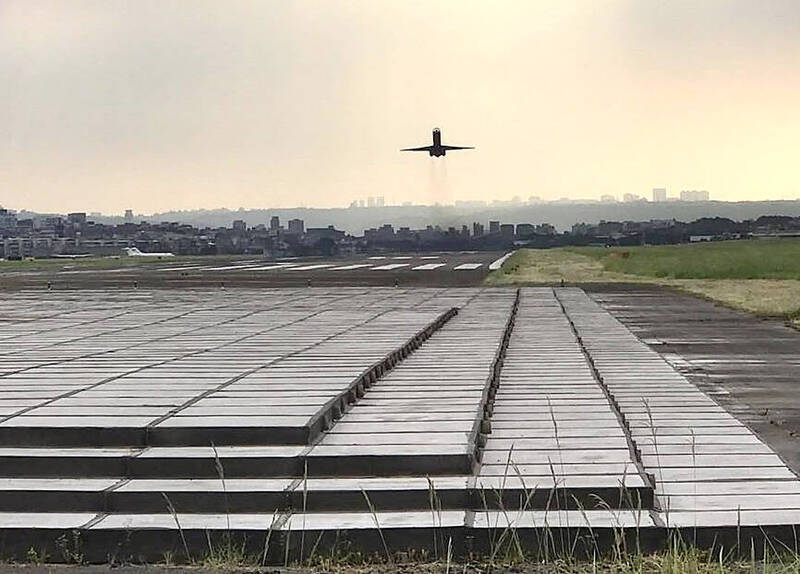《TAIPEI TIMES》 Songshan airport is safe, TTSB chairman says

Engineered materials arresting systems on the runway at Taipei International Airport (Songshan airport) are pictured in an undated photograph. Photo courtesy of Taipei International Airport
/ Staff writer, with CNA
The Taiwan Transportation Safety Board (TTSB) yesterday confirmed that Taipei International Airport (Songshan airport) has had safety installations, such as engineered materials arresting systems (EMAS), since 2009, amid concerns following a fatal crash at a South Korean airport on Sunday.
Responding to questions about the relatively short runway at Songshan airport during a legislative hearing, board chairman Lin Shinn-der (林信德) said that the end of the runway had been fitted with an EMAS — crushable material designed to stop an aircraft that overruns.
A Jeju Air Boeing 737-800 passenger plane on Sunday crashed at Muan International Airport, before smashing into a barrier and bursting into flames, killing 179 of the 181 people on board.
Democratic Progressive Party Legislator Lee Kun-tse (李昆澤) said that the runway at Muan airport is 2.8km long and Songshan airport’s is 2.6km long, adding that a TransAsia Airways plane nearly overran the runway in Taipei in 2004.
The aim of an EMAS is to prevent a plane that overruns and hits a barrier from being totally destroyed, Lin said, adding that many airports in urban areas with shorter runways depend on such systems.
Before the EMAS was fully installed in 2009, only smaller planes were cleared to land at Songshan airport, but now it can accommodate larger aircraft, he said.
In addition to the EMAS, the airport has used other special materials to construct its enclosing wall, offering further protection in the event of a crash, he added.
Following the Jeju Air crash, Lin said the TTSB would advise the Civil Aviation Administration to study what had happened. It would also work with the US’ National Transportation Safety Board to research safety features at airports that have experienced similar tragedies.
Lee said that as the Jeju Air flight might have experienced landing gear issues ahead of the crash, he was worried about the 10 China Airlines Ltd (中華航空) Boeing 737-800 planes.
The TTSB urged the carrier intensify efforts to carry out daily maintenance work and regular checkups.
Meanwhile, South Korea yesterday ordered a “comprehensive inspection” of all Boeing 737-800 aircraft operated by the nation’s carriers.
US air safety officials and staff from the beleaguered aircraft maker Boeing Co arrived to join investigators probing the worst air disaster on South Korean soil, which officials initially blamed on a collision with birds.
The nation began seven days of mourning, with flags flying at half-mast and the acting president flying to the crash site for a memorial.
Acting South Korean President Choi Sang-mok, who has only been in office since Friday, said the government was making “every effort” to identify victims and support bereaved families.
Choi, who became acting president after his two predecessors were impeached, said a “thorough investigation into the cause of the accident” would be conducted.
He also said South Korea would conduct “an urgent safety inspection of the overall aircraft operation system” to prevent future aviation disasters.
Both black boxes from the plane — the flight data recorder and the cockpit voice recorder — have been found.
“As for the comprehensive inspection, maintenance records of key systems such as engines and landing gear will be thoroughly reviewed for 101 aircraft operated by six airlines using the same model as the accident aircraft,” South Korean Deputy Minister for Civil Aviation Joo Jong-wan said. “This process will be carried out intensively starting today and continuing until January 3.”
Additional reporting by AFP
新聞來源:TAIPEI TIMES















